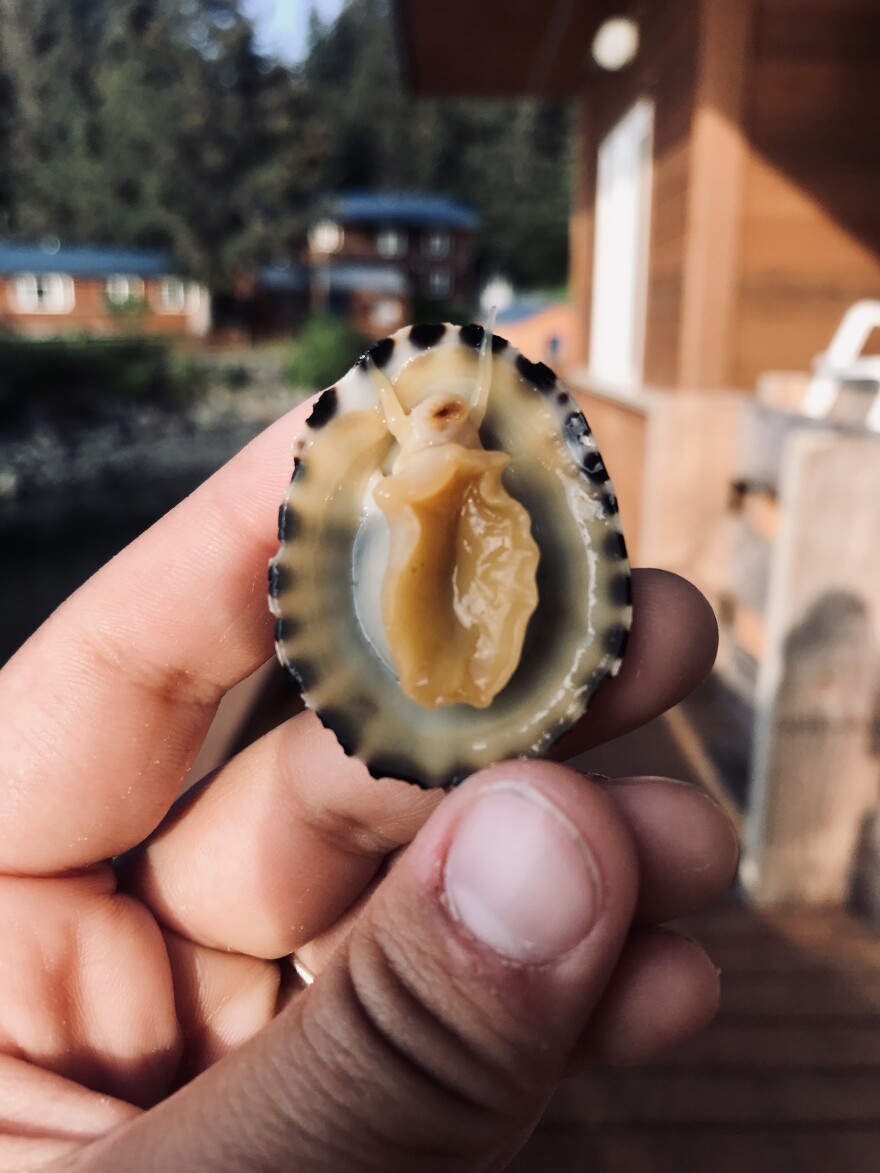You may have seen Pacific plate limpets — snail-like animals with wide, flat shells — around Kachemak Bay.
A recently published study looked into how rising ocean temperatures and acidification stresses out these limpets.
This material is based upon work supported by the National Science Foundation under award #OIA-1757348 and by the State of Alaska.
Any opinions, findings, and conclusions or recommendations expressed in this material are those of the author(s) and do not necessarily reflect the views of the National Science Foundation.
Shelby Bacus is a University of Alaska Fairbanks graduate student who co-authored the paper with Amanda Kelley, an associate professor at UAF.
Working out of the Kasitsna Bay Laboratory near Seldovia, Bacus looked at different ways to measure stress, including cortisol levels, metabolic rate, and behavior when exposed to predators.
She discovered limpets that got used to warmer temperatures ended up having lower maximum temperatures they could tolerate. At the same time, she found that ocean acidification led to an increase in cortisol levels — a stress hormone — and metabolic rates.
Another factor Bacus looked at was antipredator behavior. While she’s previously studied intertidal snails whose antipredator response diminished with acidic conditions, that wasn’t the case for these limpets.
Kelley talked about the importance of taking these measurements to better understand the organisms affected.
“Measuring physiological response across levels of organization really gives us a more comprehensive picture of how sensitive they are and what those physiological thresholds, what they actually are,” they said.
Bacus’ study joins a small number of them that look at the effects of acidification and warming at the same time.
“There's a lot of information out there about the individual effects of warming and acidification on marine organisms, but far fewer studies looking at both,” she said, “and they can provide us with more ecologically relevant predictions because our futures, again, going to see that our oceans are warming and acidified concurrently.”
What does this mean for the limpets in the bay? Bacus said that as algae consumers, these limpets play an important role in the ecosystem. In the long term, continued ocean warming and acidification could lead to a decrease in limpets that creates algae dominated systems. On the other hand, the opposite may occur — at least for a short period of time.
“The short term response might mean that if these gastropods are stressed out enough, where they are compensating by, say, consuming more and consuming more algae, it's possible that they overgraze and we see less algae dominated interactions in these food webs ecosystems,” she said.
Bacus has also considered the future of limpets as a possible local food source, and how stress plays a role in that.
“They're super abundant, have a similar taste to abalone, kind of similar size and like food range to like clams. And because they're not filter feeders, they don't accumulate toxins from from algal blooms, and can be actually a super relevant food source in the future,” Bacus said, “however, again, if they're stressed out, or if we see those populations decline in future climate scenarios, that option might not be there.”
Now, Bacus is moving from studying limpets to crabs, using a similar multifactor approach to see how snow crabs and Tanner crabs are impacted by changing oceans. So far, she’s getting similar results on the effect of ocean pH on the crabs’ stress levels to limpets, and continues to see how these factors affect the development of juvenile Tanner crabs.
Correction: This story was updated on Oct. 6, 2023 to include an acknowledgement and disclaimer related to the National Science Foundation, which funded the limpet study.



